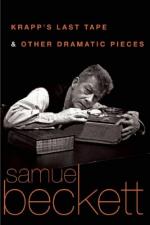|
This section contains 3,093 words (approx. 8 pages at 400 words per page) |

|
Daniel Moran is an educator specializing in literature and drama. In this essay, he examines the ways in which Beckett's play explores a man's turning away from humanity to pursue his dreams of artistic success.
In A Portrait of the Artist as a Young Man (1916), an autobiographical novel by Beckett's fellow Irishman James Joyce, the reader follows the artistic awakenings of Stephen Dedalus, who, as the novel progresses, becomes increasingly certain of what he sees as his destiny to become The Great Artist. Stephen is in constant rebellion against what he sees as the "nets" that attempt to ensnare artistic expression: Catholicism, nationalism, and creative conformity. Stephen's determination to "forge in the smithy" of his soul "the uncreated conscience" of his race, however, is constantly undercut by the very things he wishes to flee: despite his disdain for the church, for example, his first great moment of...
|
This section contains 3,093 words (approx. 8 pages at 400 words per page) |

|




